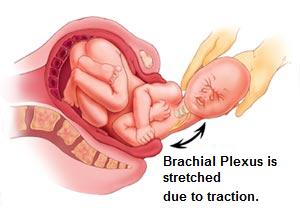When people hear about “junk science” being used in a courtroom, they assume it’s some novel theory created by a plaintiff’s lawyer to win a case. But as anyone who tries cases knows, junk can come from either side the same way any frivolous claim can.
Last week a New York appellate court dumped a recently created defense in Erb’s Palsy cases. That defense tried to allege that these birth injuries weren’t caused by malpractice, but rather, through the forces of labor itself.
Guest blogging today is New York practitioner Mark Bower, who has handled many an Erb’s Palsy case. He starts with the background on junk science, how and why it applied here and what it means for the future….take it away Mark….
————————————————
Since the U.S. Supreme Court imposed a “gatekeeper” role on trial courts in the landmark Frye and Daubert cases 20 years ago, judges have been charged with the duty of preventing the admission of “junk science” in evidence at trials. The Frye case held that a trial court must find that a scientific principle is “generally accepted” in the appropriate scientific community, before it can be expounded in court. This rule was largely dormant since originally formulated in the 1920’s, but became active after the Daubert case, that laid out five criteria that a judge must determine, to assess whether scientific testimony is admissible:
1. Empirical testing: the theory or technique must be falsifiable, refutable, and testable.
2. Subjected to peer review and publication.
3. Known or potential error rate.
4. The existence and maintenance of standards and controls concerning its operation.
5. The degree to which the theory and technique is generally accepted by the relevant scientific community.
These tests are intended to prevent swaying juries with “junk science” – unreliable or unscientific testimony from expert witnesses, whose credentials are used to impress jurors with their authority.
The term “junk science” has taken on political overtones, as various interests commonly accuse those with contrary views of promoting “junk science” to advance their agendas, for example, whether “global warming” (climate change) is man-made, or whether autism is related to childhood vaccinations. Both sides of these controversies charge the other with using junk science to further their positions.
But back to the courtroom … When SCOTUS (not generally a friend of the plaintiffs’ personal injury bar) wrote Daubert — and then, in 1996, the Kumho Tire case, which expanded the gatekeeper role to all expert testimony, scientific or otherwise — these were clearly anti-plaintiff decisions. And NY’s highest court further enlarged the threshold in Parker v. Mobile Oil, adding requirements of proving “general” and “specific causation”, linking the claimed cause of the harm directly to the injuries sustained. The courts were concerned that claimants would put in evidence novel, new theories to establish liability; and so created rules requiring that those new theories be approved by a judge for scientific merit before they could be advanced in court.
Until recently, these new legal requirements have been disproportionately used by defendants, to preclude plaintiffs’ proofs. A 2002 Rand study found that 90% of the courtroom uses of Frye and Daubert was anti-plaintiff.
However, that tide has been turning, as the plaintiffs’ bar is learning to use the same requirements against defendants. That sea change produced a tsunami last week, that precluded that “natural forces of labor” defense in an Erb’s Palsy case in upstate NY.
 Erb’s Palsy is a neurological injury that is commonly the subject of birth trauma litigation. For over 100 years, it was generally accepted that Erb’s Palsy happens when a baby’s shoulder gets caught in the mother’s birth canal during delivery. If the delivering doctor pulls on the baby’s head in order to dislodge the stuck shoulder, the nerves running down from baby’s neck to the shoulder and arm (the “brachial plexus”) can be stretched or torn, resulting in a crippled arm. That the newborn has a non-functioning arm is usually recognized at the time of birth, or very shortly thereafter.
Erb’s Palsy is a neurological injury that is commonly the subject of birth trauma litigation. For over 100 years, it was generally accepted that Erb’s Palsy happens when a baby’s shoulder gets caught in the mother’s birth canal during delivery. If the delivering doctor pulls on the baby’s head in order to dislodge the stuck shoulder, the nerves running down from baby’s neck to the shoulder and arm (the “brachial plexus”) can be stretched or torn, resulting in a crippled arm. That the newborn has a non-functioning arm is usually recognized at the time of birth, or very shortly thereafter.
This mechanism causing Erb’s Palsy was so well-established, that the medical literature used to refer to it as “Obstetrical Brachial Plexus Palsy.” That is, until the medical community started to push back 20 or so years ago, and the waves of “tort reform” gathered momentum.
A small cadre of obstetricians developed a new theory, that contrary to the conventional wisdom, Erb’s Palsy is not due to the delivering physician pulling on the baby’s head or neck after all. Instead, they theorized, it is due to the “natural forces of labor” somehow stretching the baby’s neck during childbirth, so the fault is Mother Nature’s, not obstetrical malpractice.
This new theory was happily embraced by the obstetrical community, as it deflects the blame for Erb’s palsy injuries away from obstetricians and midwives. The same handful of doctors who invented the theory, published it over and over, each one repeatedly citing the others as sources. And so, around and around it went, building a significant body of literature, but with no actual original research or studies validating the theory, other than its proponents continually reinforcing one another. And the same half dozen or so doctors flew around the country, testifying to this theory in the defense of Erb’s Palsy cases, and depriving injured infants of recovery.
That hit a brick wall in a major new decision in Muhummad v. Fitzpatrick. In this case, thanks to very skillful lawyering by attorney Joseph M. Lichtenstein of Mineola, NY, an appellate court – for the first time that we know of – precluded the “natural forces of labor defense”. The plaintiff successfully showed that this defense theory was just that – only a theory, not an accepted, verified scientific principle or fact. Although defense interests gladly embraced the theory because it is exculpatory, it has never been subject to bona fide scientific testing. (The defense maintains that it cannot be ethically tested, as that would result in injuring newborns; but whether that is true or not, the fact remains that the theory has never been scientifically validated.)
The “natural forces of labor defense” is mainly derived from hindsight analyses of birth records of injured babies, where the obstetricians did not document pulling on the babies’ heads, so the proponents concluded that the babies’ injuries had to be acts of nature, and could not be acts of man. But that conclusion depends on the premise that obstetricians will conscientiously document their own acts that could easily be considered to be malpractice. (Analogize to a driver in an intersection collision writing in his accident report, “I drove through the red light and struck the other vehicle that had the right of way.” Doesn’t happen.)
Few impartial observers are so naive as to expect inculpatory documentation to be written by the physicians who know that the babies they delivered were born injured. Furthermore, prospective testing using scientifically-accepted mannequins and methematical models by a leading biomechanical engineer in the field, actively disproved the defense theory, and supported the conventional wisdom that Erb’s Palsy is due to faulty technique by the doctor, particularly where the baby has a serious, permanent injury that is confirmed by MRI proof of nerve root trauma.
Based on these proofs, the trial court precluded the “natural forces of labor” defense, and the appellate court affirmed the preclusion.
The significance of this decision is huge. Not only is the “junk science” defense of Erb’s Palsy cases recognized for the junk that it is (at least, in this case), but the legal tests that had been thought of strictly as a defense weapon has now been turned against the defense in a high-profile way.
With the evolving realization that “junk science” is promoted by the defense, and can be precluded by impartial trial courts, we may see the reversal of the tides put in motion by the Supreme Court many years ago. “The law of unintended consequence” coming back to bite defense interests on their butts.


